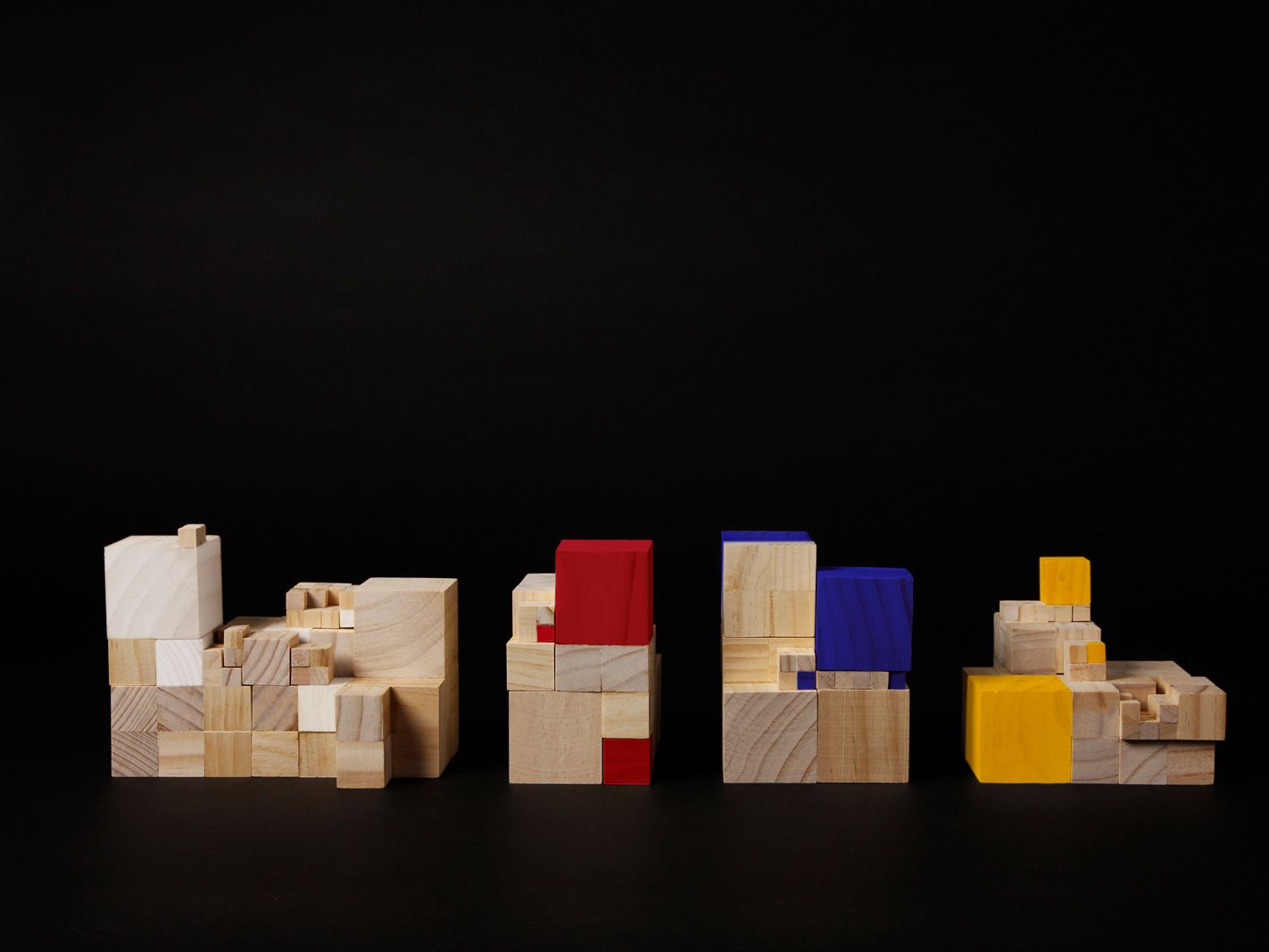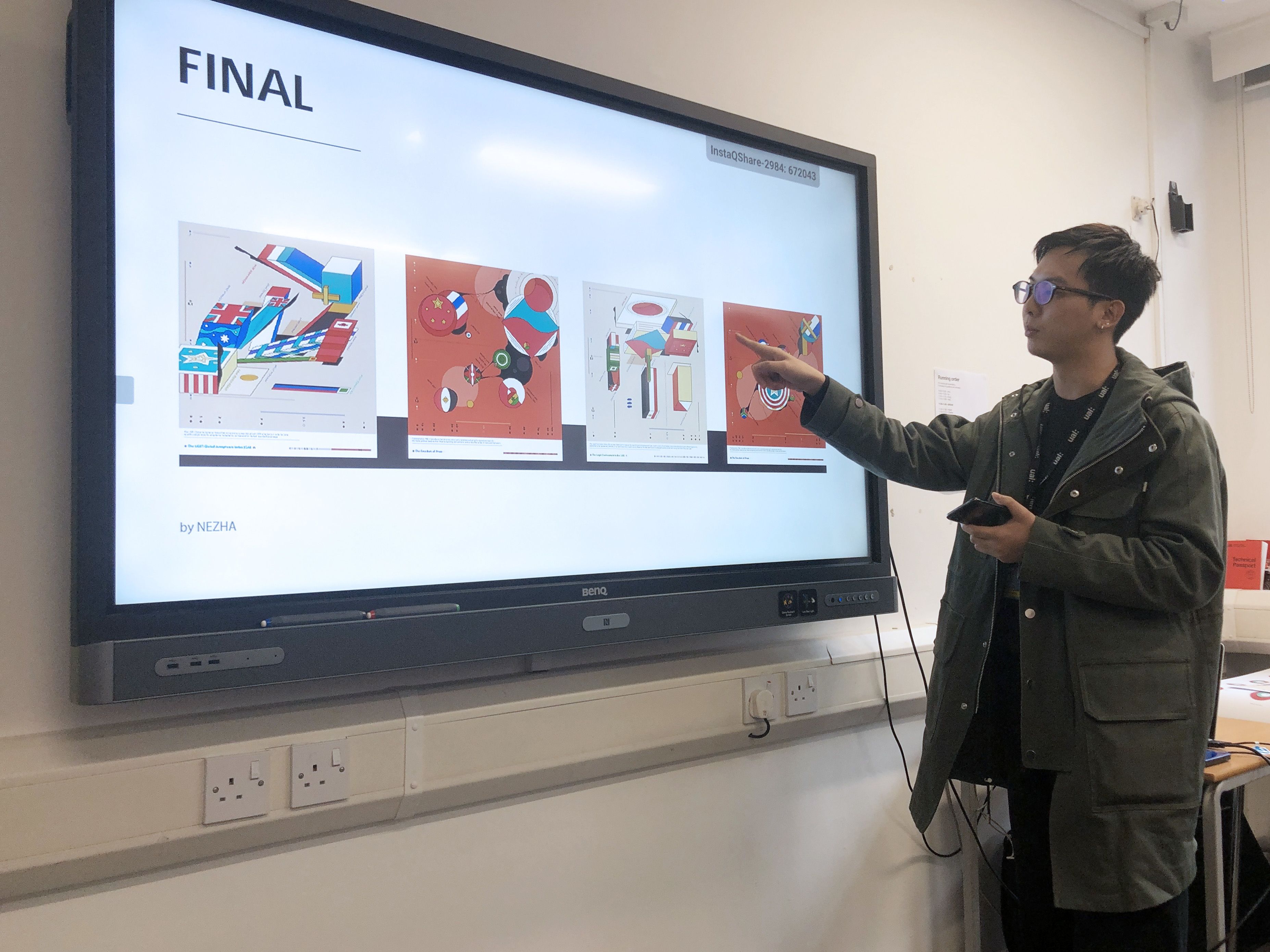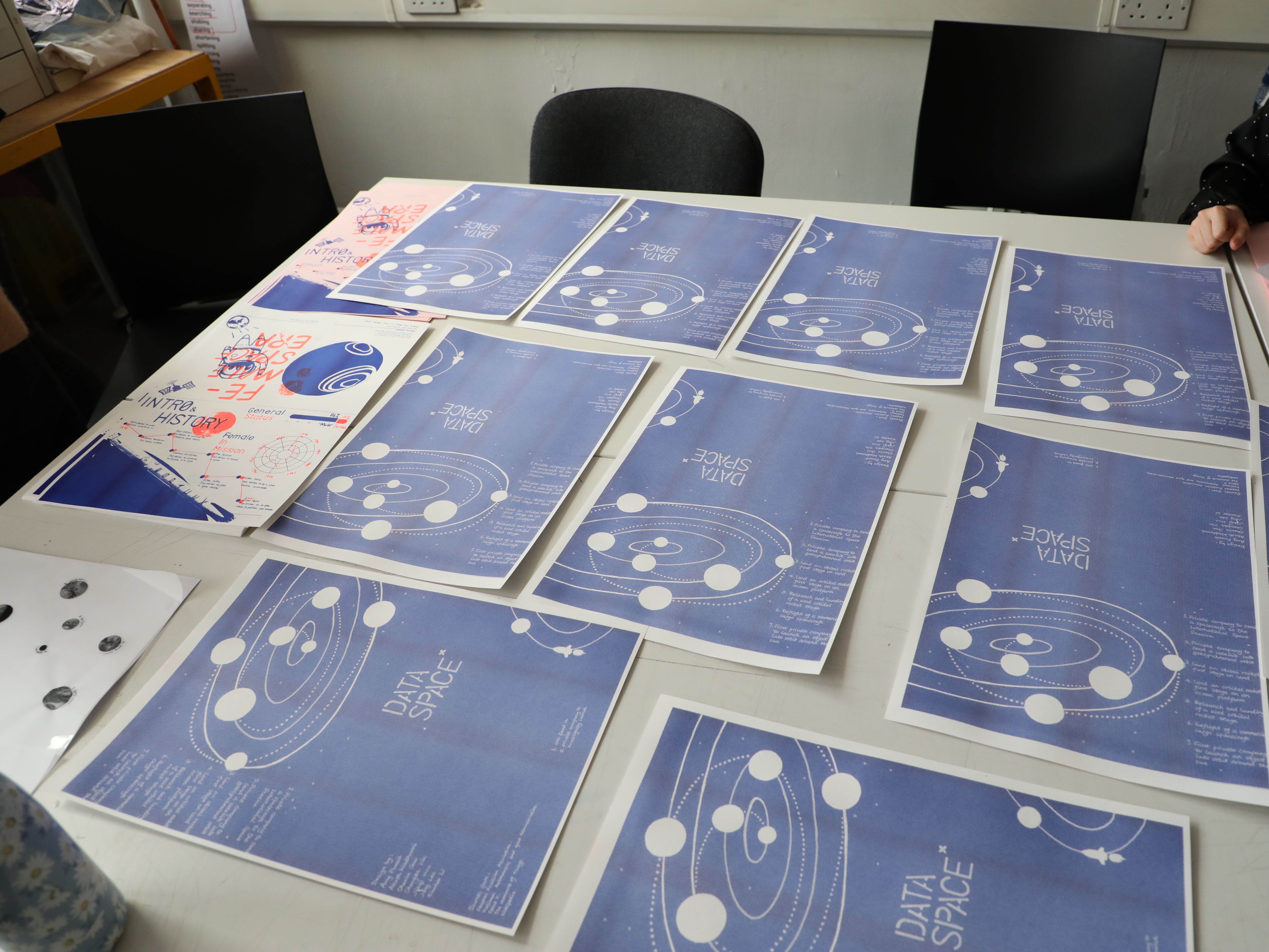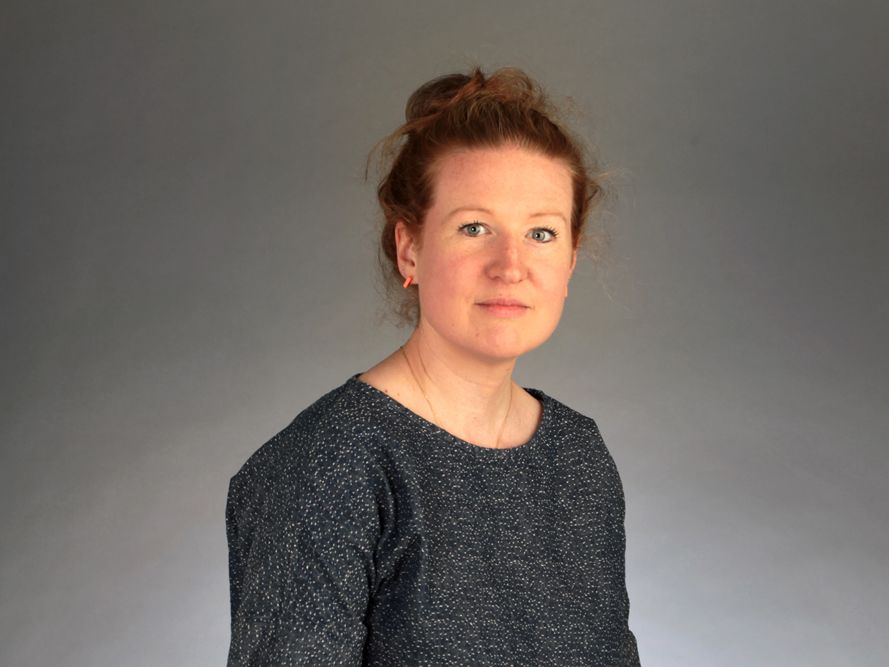Launched in early 2020, the Glossary Project challenged 10 postgraduate students from London College of Communication (LCC) to communicate complex biotechnology terms and concepts in innovative ways.
This was inspired by an earlier collaboration on scientific literature between design researchers at University of the Arts London (UAL) and Pharma Factory, a research initiative which aims to advance medical, veterinary and diagnostic products through Plant Molecular Farming (PMF).
Funded by the European Commission, Pharma Factory works with partners ranging from SMEs to public organisations such as St George’s, University of London, the John Innes Centre and UCL, and focuses on using plant-based technology to produce innovative bio-pharmaceuticals such as vaccines, hormones, drugs and antibodies.
The Glossary Project provided a unique opportunity for students on MA Data Visualisation to utilise their interdisciplinary skills by translating scientific terms and concepts into tangible content for audiences ranging from children to the wider public. As part of the live brief, students were also invited to visit the research labs at St George’s and took part in a Q&A session with Pharma Factory scientists before presenting their final outcomes in March 2020.
"A brilliant resource"
Dr Pascal Drake, Lecturer in the Institute for Infection and Immunity at St. George’s, supported students with feedback on the scientific elements of their work and was impressed by the results.
“I was amazed at the sheer amount of effort that must have gone into some of the projects,” he said.
“The amount of information presented was incredible - a brilliant resource.”
-
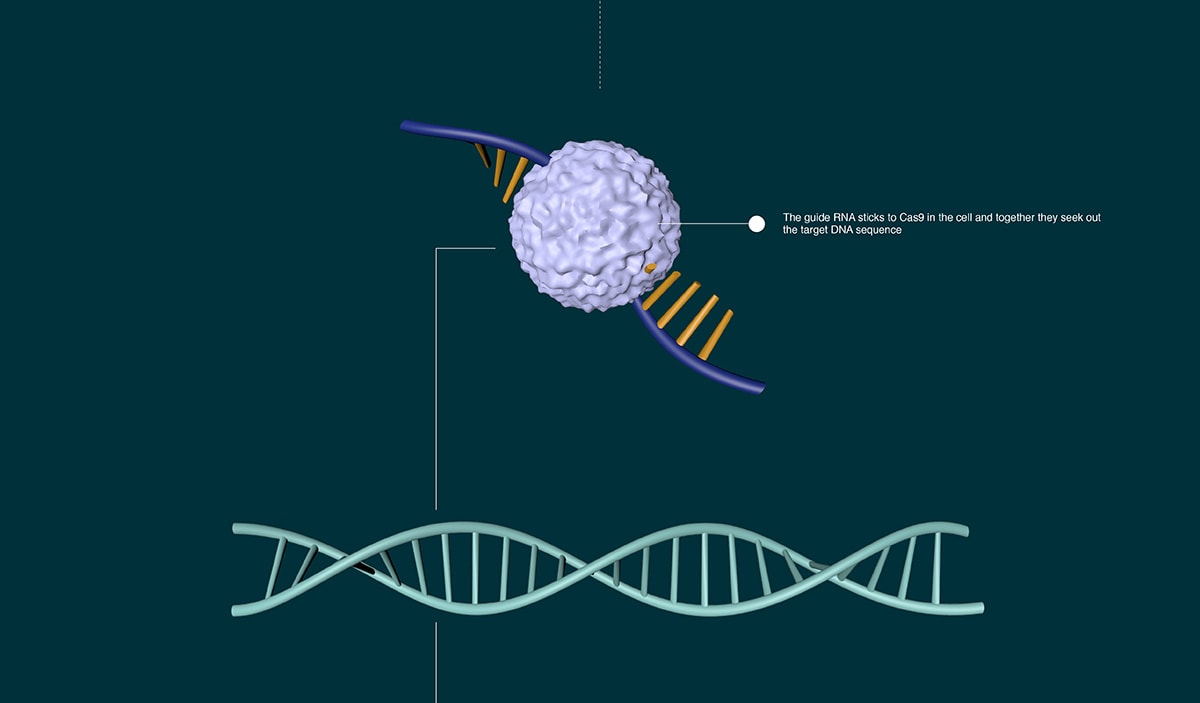
Image taken from 'Editing with CRISPR', Cliff Rialdi.
-
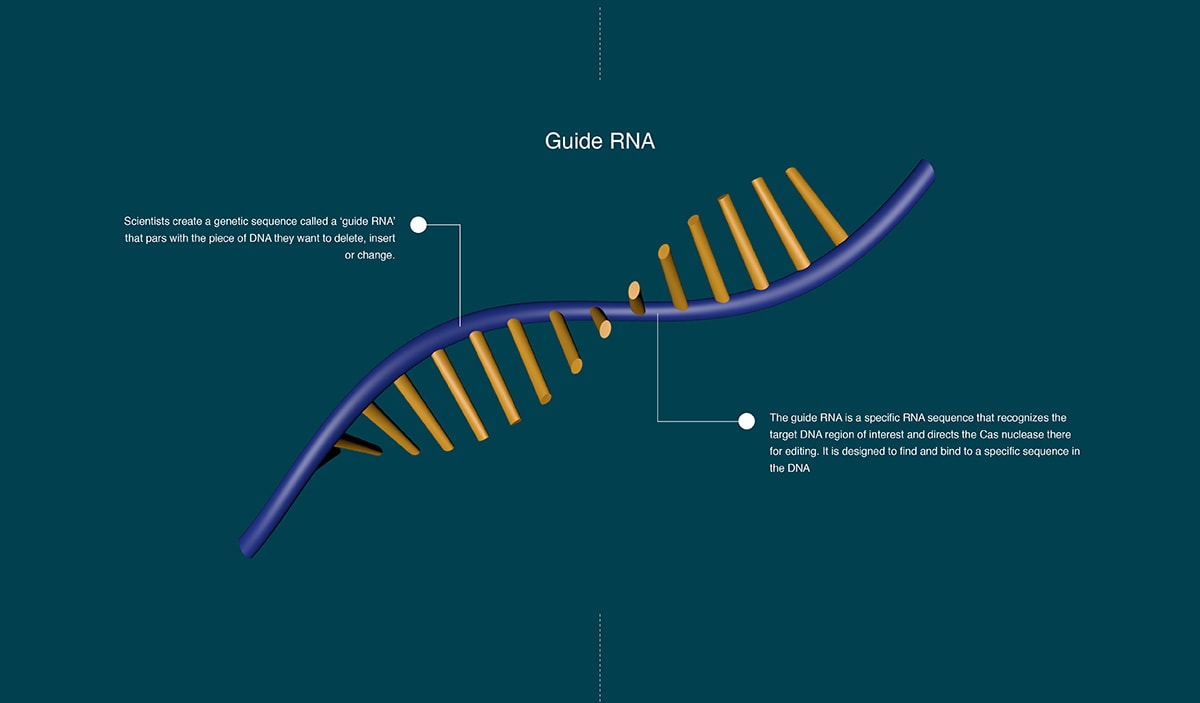
Image taken from 'Editing with CRISPR', Cliff Rialdi.
-
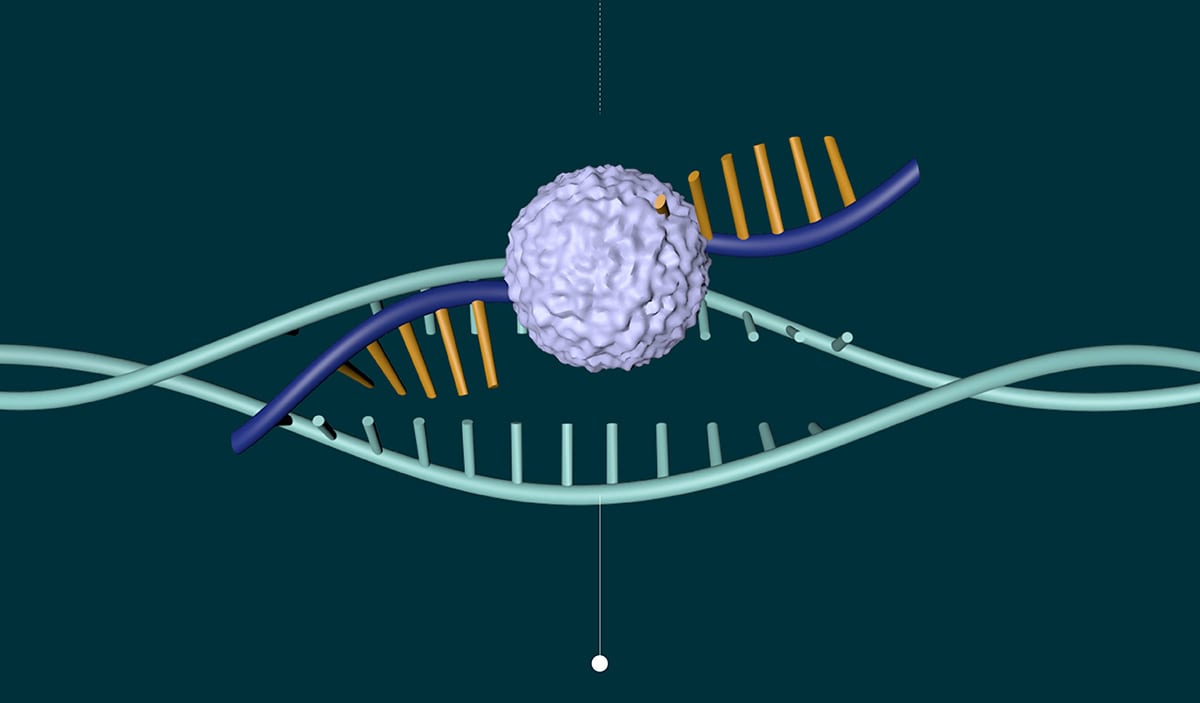
Image taken from 'Editing with CRISPR', Cliff Rialdi.
"The point at which science and art meet”
We chatted to one of the participating students, Cliff Rialdi, about his experience of the project, as well as the highlights of his time at LCC.
How did you first get involved with the Pharma Factory project?
It was part of a collaborative unit where we worked with external organisations. I chose Pharma Factory since I’ve always been interested in science, especially the point at which science and art meet. I wanted to explore the field more and find out how I could apply my practice to that area.
Tell us a little bit about your work - what did you want to achieve, and how did you reach your goals?
My work is a website about genetic modification and genetic engineering which are part of the practices of biotechnology. My site takes the form of an infographic which provides information about genetic engineering such as the process itself and an exploration of DNA.
As biotechnology is a broad area, most people find it really difficult to understand. I wanted to create a piece of work which made it easier for people to comprehend and enjoy this topic by creating a visual language that serves as the main informative element.
What were your highlights of the project?
My highlights of the project were the visual models I created in 3D format since they play a very important role in my website's content.
What have you most enjoyed about studying on the MA Data Visualisation course at London College of Communication?
I’ve most enjoyed the workshop classes where I had chance to learn and try new things, which also helped me to develop my practice. Additionally, I found the facilities really helpful when doing my work.
-
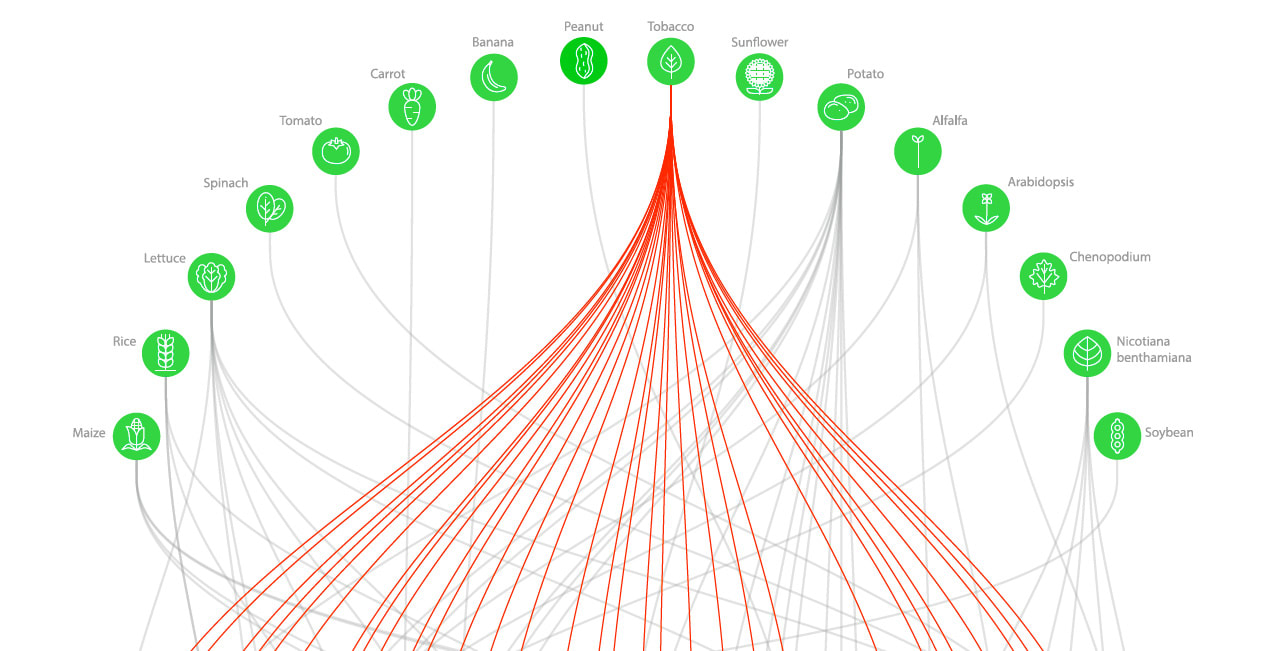
Image taken from 'Protein Bible', Binfen Song.
-
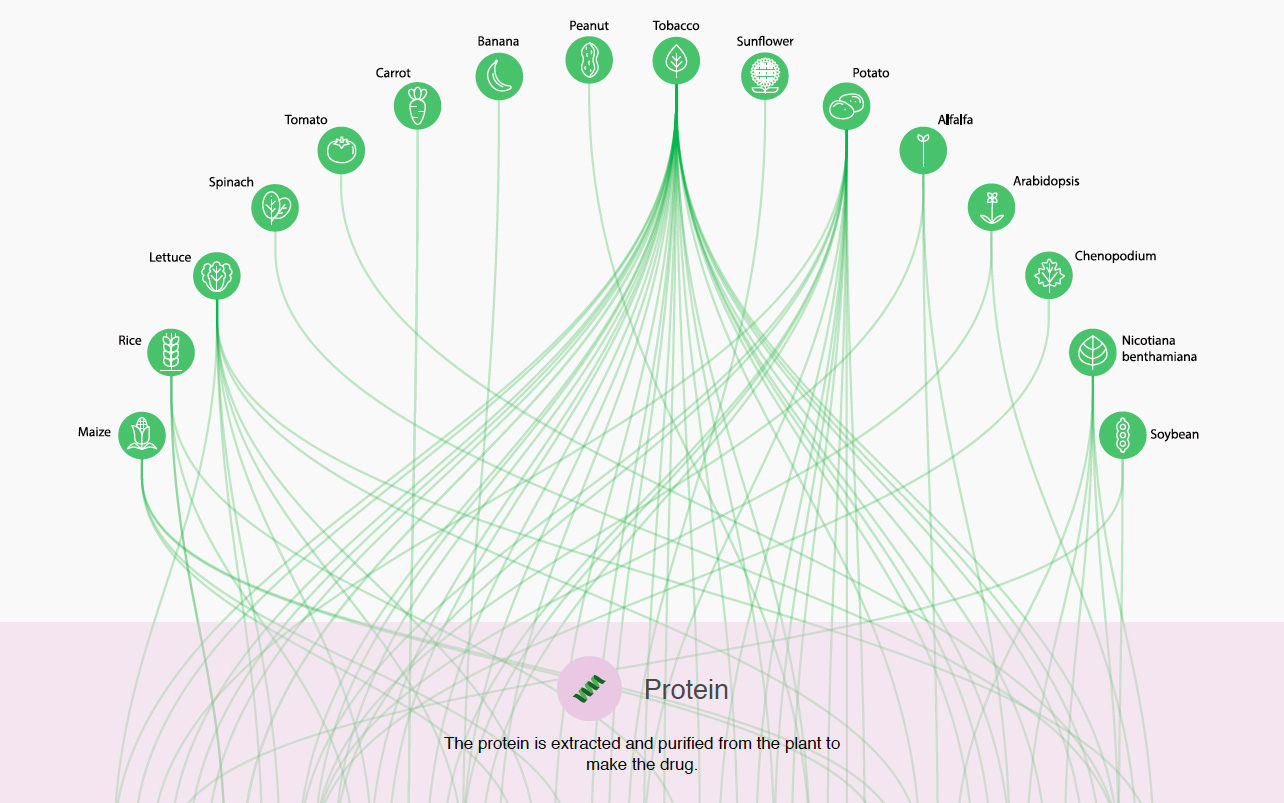
Image taken from 'Protein Bible', Binfen Song.
-
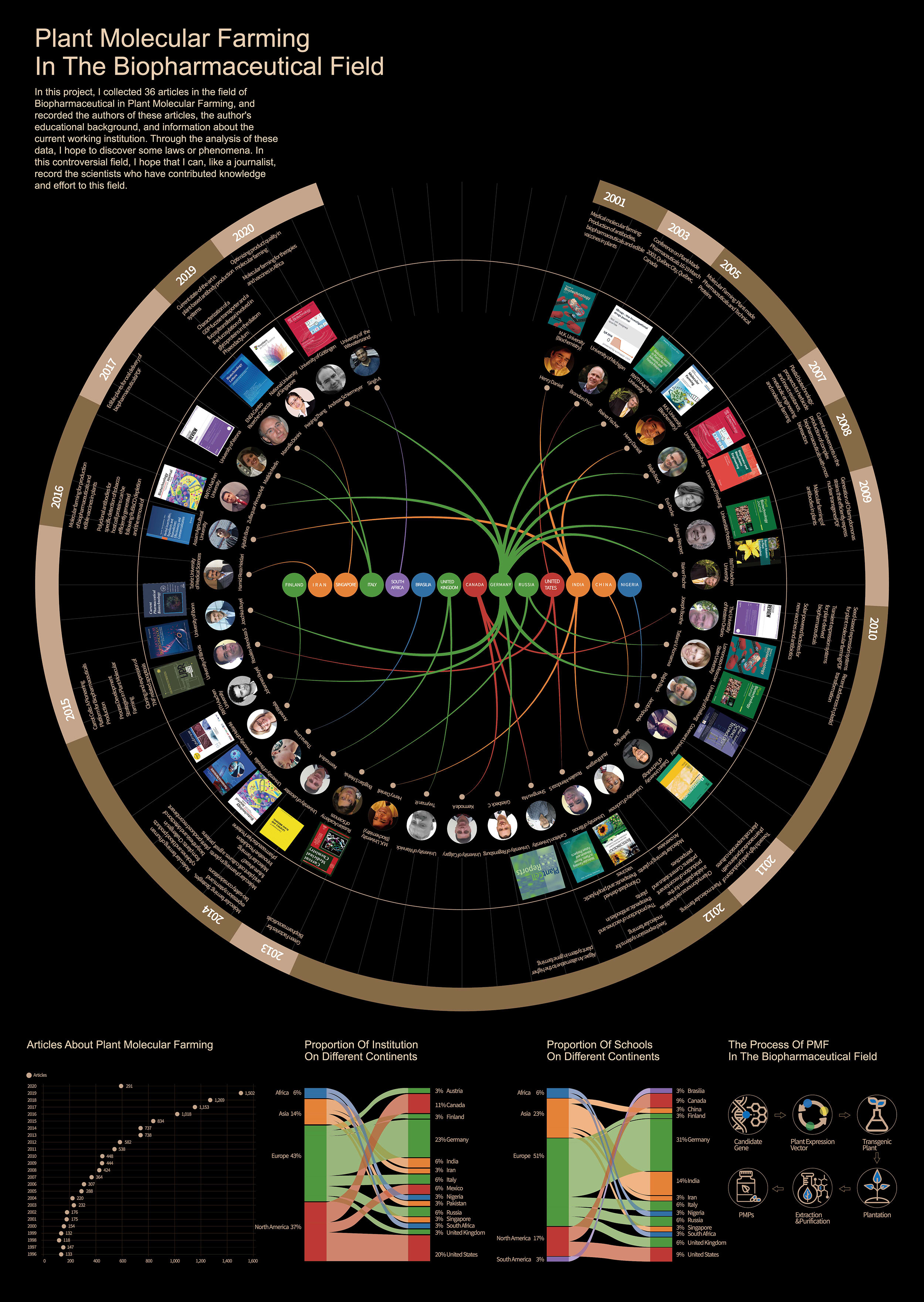
Image taken from 'Scientists behind biopharmaceuticals in Plant Molecular Farming', Wei Xie.
“Practitioners who aren’t afraid to ask questions, experiment, challenge and be bold”
Ian Carr, Lecturer on MA Data Visualisation at LCC, outlined some of the major benefits offered to students through The Glossary Project.
“One key aspect was providing students with an opportunity to work with a live client, and to engage with a subject that is new and unfamiliar,” he said.
“It's always encouraging to see how each student researches, collaborates and develops their project with a sensitive and considerate understanding of the topic.
The vast variety of outcomes and approaches to the brief ranged from animations, physical games, interactive tools and educational websites. However, as a collaboration, the team excelled in sharing and challenging each other to become practitioners who are not afraid to ask questions, experiment, challenge and be bold.”
"Parameters, challenges and opportunities"
Course Leader Henrietta Ross explained the significant rewards of engaging with such a complex topic as Plant Molecular Farming.
“This project involved engaging with what was, for many, the very unfamiliar territory of Pharma Factory, as well as gaining an insight into the parameters, challenges and opportunities in this field,” she said.
“Visualising a glossary to key terms allowed the students to use and develop their research and collaboration skills, as well as their work with visual language, visual rhetoric and narrative.
“Working with the Pharma Factory team on this project has been both inspiring and productive, and offered participants the opportunities to build on their experience and confidence, as well as presentation, production and project management skills.”
Related links
- Find out more about Pharma Factory.
- Read more about our MA Data Visualisation course.
- Explore the MA Data Visualisation website.


